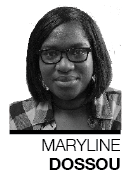 Intellectual heritage, a required course at Temple, is meant to share and analyze differing viewpoints, not to demean any faiths.
Intellectual heritage, a required course at Temple, is meant to share and analyze differing viewpoints, not to demean any faiths.
Philadelphia is a melting pot of ideas presenting themselves at every street corner, every public forum and on every campus. There is a healthy mix of exposure to different perspectives on life both around the city and in the classrooms.
As part of Temple’s academic requirements, students are obligated to take courses in race, art and religion, among others. One of the required courses is intellectual heritage, better known as Mosaics. IH is one of those classes that students either love or hate. It involves the analysis of several classic and religious texts, including the Bible, the Bhagavad Gita, the Daodejing and the Quran.
The objective in IH, however, is not to disparage any faiths, but to open the minds of students to what is out there in a non-judgmental environment, allowing them to have open dialogue among peers and walk away with whatever they will. The learning of varying faiths and cultures in an intellectual atmosphere is essential to fight ignorance and embrace tolerance.
“We study it to see what the world views are, what the understandings of human nature are, even the position on what the universe is about,” Dr. Richard Libowitz, an associate professor who teaches IH, said. “We’re not missionaries for religion, we’re missionaries for thought.”
Though many are impartial to the study of these texts, the topic of religion remains a controversial one in any context. In my experience, to avoid seeming like an advocate for any particular religion, IH professors usually make a disclaimer that their goal is not to be offensive. They also refrain from disclosing their personal beliefs to avoid bias.
While the point of looking at this is to make it more neutral, it actually ends up having the opposite effect on some students.
“If you’re going to use a religious text, look at it as a religious text,” senior chemistry major Zenia Jones, a practicing Israelite, said. “When they analyze the Bible, they look at God as a character, and the scenarios as fictitious plots. That creates a conflict with religious people.”
Libowitz, who has his doctorate in religious studies, attributes this to differing viewpoints depending on which professor happens to be teaching the course. With more than 220 sections of IH each semester, he admits that some teachers are bound to have biases based on their personal perspectives.
But no matter how unbiased a professor may be to the subject, there will always be students who find the study of religious texts problematic and even offensive. Certain students worry that by participating in the religion unit of IH, they are subsequently betraying their faith. There is nothing wrong, however, with opening your mind. Being accepting of other faiths does not discredit one’s belief in one’s own faith.
It is important, especially on such a diverse campus, to have tolerance for people from all walks of life, and that begins with understanding of different beliefs.
“This is a particularly important part of the search for knowledge,” Libowitz said. “These materials have been so significant to so many people for such a long period of time that if we isolate them, think of all the knowledge we’re losing. In class, we’re a community of scholars. So we must deal with politely and respectfully, as scholars.”
Maryline Dossou can be reached at maryline.dossou@temple.edu.



Be the first to comment